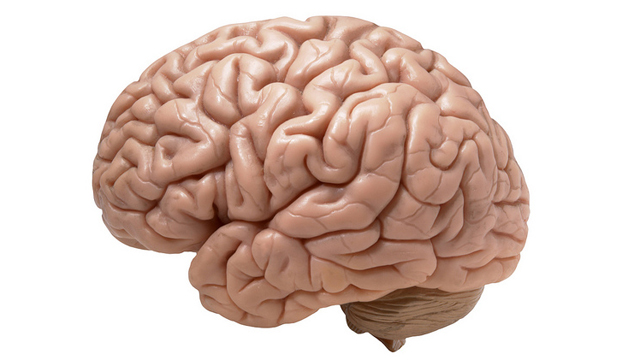The question of whether quantum computers can break all encryption has become one of the most discussed and misunderstood topics in modern science and cybersecurity. Quantum computing is a revolutionary paradigm that leverages the principles of quantum mechanics to process information in ways that classical computers cannot. While the technology holds immense promise for solving problems beyond the reach of today’s fastest supercomputers, it also poses serious implications for data security. Many encryption systems currently protecting global communications, financial transactions, and government secrets rely on mathematical problems that quantum computers could potentially solve much more efficiently than classical machines.
However, the reality is more nuanced than the simple assertion that quantum computers will “break all encryption.” Not all forms of encryption are equally vulnerable, and not all quantum computers will be powerful enough to pose a realistic threat. Understanding this issue requires a deep exploration of how quantum computing works, how current cryptographic systems operate, and what the future of encryption may look like in a post-quantum world.
The Foundations of Quantum Computing
Quantum computing represents a radical shift in computation. Traditional computers use bits that exist in one of two states: 0 or 1. Quantum computers, on the other hand, use quantum bits or qubits, which can exist in superpositions of states. This means a qubit can be in both 0 and 1 simultaneously, allowing a quantum computer to explore multiple solutions at once. When many qubits are entangled—a uniquely quantum phenomenon—the system can represent an exponentially large number of possible states compared to classical bits.
This quantum parallelism offers a form of computational power that grows exponentially with the number of qubits. Algorithms designed to exploit this capability can solve specific types of problems dramatically faster than classical algorithms. However, it is essential to note that quantum computers do not speed up every computational task; they are only more efficient for certain problems with structures that quantum algorithms can exploit.
Two quantum algorithms are particularly significant in the context of encryption: Shor’s algorithm and Grover’s algorithm. Each targets different aspects of cryptographic security and illustrates why quantum computing is such a concern for cybersecurity experts.
Classical Encryption: How Modern Security Works
Encryption is the process of transforming data into a coded format that can only be read by someone with the appropriate key. Modern cryptography ensures confidentiality, integrity, and authentication in digital communications. Most encryption systems rely on mathematical problems that are easy to perform in one direction but extremely difficult to reverse without specific information.
Public-key cryptography, such as RSA (Rivest–Shamir–Adleman), relies on the mathematical difficulty of factoring large numbers. If you multiply two large prime numbers together, you get a number that is easy to compute but extremely difficult to factor back into its original primes. This asymmetry underpins the security of RSA, which is widely used to secure internet communications, digital signatures, and financial systems.
Another widely used system is Elliptic Curve Cryptography (ECC), which relies on the difficulty of the elliptic curve discrete logarithm problem. ECC offers similar security with shorter key lengths, making it efficient for mobile devices and constrained environments.
In contrast, symmetric-key cryptography, such as the Advanced Encryption Standard (AES), uses the same secret key for both encryption and decryption. Security in symmetric systems relies on the computational effort required to search through all possible keys—a process known as brute force.
These systems are considered secure today because even the fastest supercomputers would take astronomically long to break them through brute-force attacks or factorization. But the emergence of quantum computing changes this assumption.
Shor’s Algorithm: The Quantum Threat to Public-Key Cryptography
In 1994, mathematician Peter Shor developed an algorithm that demonstrated the theoretical power of quantum computers to factor large integers exponentially faster than classical algorithms. Shor’s algorithm also efficiently computes discrete logarithms, which are central to many cryptographic protocols, including RSA, Diffie–Hellman key exchange, and ECC.
Classically, factoring an integer ( N ) that is the product of two large primes is computationally hard. The best-known classical algorithms, such as the general number field sieve, require sub-exponential but still astronomically large time for sufficiently big numbers. For example, a 2048-bit RSA key would take longer than the age of the universe to break using current classical methods.
Shor’s algorithm, however, reduces this problem to a polynomial-time computation on a sufficiently large quantum computer. This means that, in principle, a quantum computer with enough stable qubits could factor such numbers within hours or even minutes.
The implications are enormous. RSA, ECC, and other widely used public-key systems would become insecure if practical quantum computers existed. Any encrypted communication that relies on these systems for confidentiality could be decrypted retroactively if intercepted and stored until quantum computers become powerful enough. This concept, known as “harvest now, decrypt later,” is one of the biggest concerns for long-term data security.
Grover’s Algorithm: The Challenge for Symmetric Encryption
While Shor’s algorithm undermines public-key cryptography, symmetric encryption faces a different, though less catastrophic, quantum threat. In 1996, Lov Grover introduced an algorithm that can search an unsorted database—or equivalently, test possible keys—quadratically faster than classical brute-force search.
Classically, if an encryption algorithm uses a key of length ( n ), it would take approximately ( 2^n ) operations to find the key by brute force. Grover’s algorithm can reduce this to ( 2^{n/2} ) operations. For example, AES-128, which uses a 128-bit key, would have an effective security of 64 bits against a quantum attack. To maintain classical-level security, cryptographers could simply double the key length, making AES-256 quantum-resistant in practice.
Therefore, while symmetric encryption and hash functions do face performance degradation under quantum attack, they are not fundamentally broken. Unlike RSA or ECC, their security can be maintained by increasing key sizes or adjusting algorithms accordingly.
The Practical Limitations of Quantum Computers
Despite the theoretical power of quantum algorithms, there are substantial practical barriers to realizing quantum computers capable of breaking encryption. Quantum computing is still in its infancy. Today’s quantum devices have tens to hundreds of physical qubits, but effective computation requires fault-tolerant qubits—logical qubits that can withstand errors through quantum error correction.
Quantum systems are extremely sensitive to noise, temperature, and interference. Maintaining qubit coherence (the property that allows them to exist in superposition) over long periods is extraordinarily difficult. Current devices, known as NISQ (Noisy Intermediate-Scale Quantum) machines, are far from the scale needed to run Shor’s algorithm on cryptographically significant numbers.
Estimates suggest that breaking RSA-2048 would require millions of physical qubits and extremely low error rates, far beyond what exists today. Researchers continue to improve quantum architectures, but the gap between current technology and the required scale remains vast.
In addition, quantum error correction imposes enormous overhead. Each logical qubit might require thousands of physical qubits to function reliably. Building and maintaining such a system would be a monumental technological and engineering challenge.
The Timeline for Quantum Decryption
Predicting when quantum computers will become powerful enough to break current encryption is challenging. Optimistic estimates suggest it could happen within a few decades, while others believe it may take much longer. The development curve of quantum technology is uncertain and depends on breakthroughs in qubit stability, scalability, and error correction.
Nevertheless, governments, corporations, and cryptographic experts are preparing for a “post-quantum” world. The transition to quantum-resistant algorithms cannot happen overnight, as global communication infrastructure relies heavily on existing cryptographic standards. It may take decades to fully migrate systems, making early preparation essential.
The U.S. National Institute of Standards and Technology (NIST) has already initiated the Post-Quantum Cryptography Standardization Project to develop and approve algorithms that can withstand quantum attacks. The process began in 2016 and has selected several candidates, including CRYSTALS-Kyber for key encapsulation and CRYSTALS-Dilithium for digital signatures. These algorithms rely on mathematical problems that are believed to remain hard even for quantum computers, such as lattice-based, code-based, and multivariate polynomial problems.
Post-Quantum Cryptography: The Next Generation of Security
Post-quantum cryptography (PQC) aims to develop encryption schemes that can resist both classical and quantum attacks. Unlike quantum key distribution, which requires quantum communication channels, PQC algorithms are designed to run on classical computers and integrate seamlessly into existing infrastructure.
Lattice-based cryptography is one of the leading approaches. It relies on the difficulty of solving certain problems in high-dimensional lattices, such as the Learning With Errors (LWE) problem. These problems appear to be resistant to known quantum algorithms, including Shor’s and Grover’s.
Another promising area is hash-based cryptography, which uses hash functions for digital signatures and authentication. Since Grover’s algorithm only provides a quadratic speedup, increasing hash output sizes can maintain adequate security. Code-based and multivariate cryptography offer additional alternatives that may serve specialized applications.
The advantage of PQC is that it does not require waiting for large-scale quantum computers to emerge. Implementations can begin now, providing protection against future threats. However, PQC schemes are often more computationally intensive and require larger key sizes, posing challenges for performance and compatibility.
Quantum Key Distribution: Security from Quantum Physics Itself
While post-quantum cryptography strengthens mathematical defenses, quantum key distribution (QKD) provides an entirely different approach—using the laws of physics to guarantee security. QKD allows two parties to share encryption keys securely by transmitting quantum states of particles, such as photons.
The fundamental principle behind QKD is that measuring a quantum system disturbs it. Any attempt by an eavesdropper to intercept the key will introduce detectable anomalies, alerting the communicating parties. The most famous protocol, BB84, developed in 1984 by Charles Bennett and Gilles Brassard, has been experimentally demonstrated and commercialized in various forms.
QKD is theoretically unbreakable because it does not rely on computational assumptions. However, it faces practical challenges such as transmission distance, hardware cost, and integration with existing networks. Moreover, QKD secures only key exchange, not the encryption algorithms themselves, and thus must be combined with conventional cryptography for full security.
The Broader Cybersecurity Implications
The quantum threat extends beyond encryption itself. Many critical systems rely on digital signatures, authentication, and certificates for trust. Public-key infrastructure (PKI) underpins secure internet connections, software updates, and blockchain networks. If quantum computers can forge digital signatures, the integrity of digital trust systems could collapse.
For example, cryptocurrencies like Bitcoin depend on elliptic curve signatures to verify ownership of assets. A sufficiently powerful quantum computer could, in theory, derive private keys from public addresses, enabling theft or manipulation of digital currencies. Although such scenarios remain hypothetical, they highlight the importance of developing quantum-resistant blockchain technologies.
The risk of long-term data compromise is equally concerning. Sensitive information encrypted today—such as medical records, government communications, or intellectual property—could be stored by adversaries for future decryption. Even if quantum computers are decades away, the potential for retroactive breaches necessitates proactive defense.
Quantum-Resistant Strategies in Development
The transition to quantum-safe security involves several parallel efforts. First, organizations are adopting hybrid cryptographic systems that combine classical and post-quantum algorithms. This ensures continuity of protection even if one system is compromised.
Second, researchers are developing cryptographic agility—the ability to switch rapidly between algorithms without overhauling entire infrastructures. This flexibility is critical as the security of new schemes evolves with further analysis.
Third, institutions are inventorying cryptographic assets to assess their quantum vulnerability. Identifying which systems rely on RSA or ECC helps prioritize migration efforts. Industry and government collaborations are forming to coordinate these transitions at scale.
Finally, ongoing research into quantum hardware-resistant architectures, such as quantum-secure networks and hardware security modules (HSMs), is laying the groundwork for a new generation of digital defenses.
Ethical and Geopolitical Considerations
The advent of quantum computing has far-reaching ethical and geopolitical implications. Nations capable of developing large-scale quantum computers first could gain unprecedented intelligence and cyber advantages. Breaking encryption would allow access to secure communications, classified information, and financial systems.
This prospect has already triggered a new kind of technological arms race—one focused not only on quantum computing itself but also on post-quantum security. Governments are investing heavily in both quantum research and defensive cryptographic measures. The balance between innovation, privacy, and security will be a defining challenge of the coming decades.
Moreover, the ethical dimension extends to data privacy and human rights. Quantum breakthroughs could undermine digital confidentiality before countermeasures are widely deployed. Ensuring equitable access to post-quantum security technologies will be crucial to avoid widening global disparities in cybersecurity readiness.
The Future Landscape of Quantum and Classical Coexistence
Quantum computing will not instantly render classical systems obsolete. Instead, we are likely to enter a long transitional period where both technologies coexist. Classical computers will remain dominant for general tasks, while quantum devices will be used for specialized applications such as optimization, materials science, and cryptography research.
During this coexistence, hybrid encryption systems combining post-quantum and traditional algorithms will safeguard communications. Organizations will need to manage complexity and ensure compatibility across different standards. International coordination on cryptographic policy and standards will be essential to maintain secure global communication.
Quantum computing will also inspire new fields of study, such as quantum-safe architecture design, quantum network engineering, and secure quantum cloud computing. These innovations will expand both the opportunities and responsibilities of cybersecurity professionals worldwide.
Conclusion
The question of whether quantum computers can break all encryption does not have a simple yes or no answer. Theoretically, quantum computers equipped with Shor’s algorithm could shatter the foundations of today’s public-key cryptography, rendering systems like RSA and ECC insecure. Grover’s algorithm poses a more limited but still significant challenge to symmetric encryption, effectively halving its security strength.
However, the threat is not immediate. Current quantum computers lack the scale, stability, and error correction required for such feats. Building a machine capable of breaking modern cryptography may still be decades away. In the meantime, the cryptographic community is not standing idle. The development of post-quantum cryptography, quantum key distribution, and hybrid systems represents a robust response to the coming quantum era.
Quantum computing will transform technology and science, but it need not destroy digital security. With foresight, research, and coordinated action, society can adapt its cryptographic foundations before the threat becomes reality. The future of encryption will not be one of defeat but of evolution—an era where quantum power and quantum-resilient security coexist to protect the integrity of the digital world.






